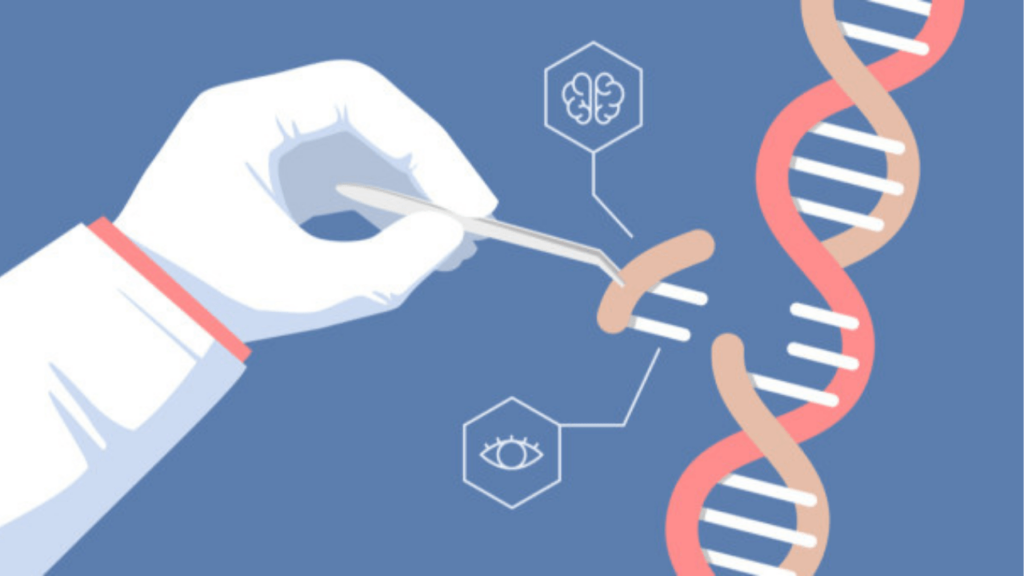IBDP Biology
The overview is going to help you understand how imperative it is to understand the meaning of Biology in explaining the diversity of living species-either micro or macro. The inventions and innovations in research is making the science walk its progressive steps in the face of growing pressure on the population and the environmental system. The study of Biology belongs to Group 4 ‘Sciences’ of the BPDP curriculum. The study of life and living cellular organisms owes its origin from two Greek words- ‘bios’ meaning life and ‘logos’ meaning study.
Get In Touch

IB Biology Syllabus
Best IB Biology Tutors


IB Biology courses
IB Biology 1 on 1 interactive classes online


IB Biology notes
Through nature’s intrinsic selective discretion of differential survival and reproduction of life due to the differences in their phenotypes, over a period of three billion years we have almost more than eight million species on earth.
The word “biology” was coined by German naturalist Gottfried Reinhold in 1802 but our comprehension of life started with the advent of technology in the C18th and C19th.
The thread of life is spun with cell as the basic unit of life at one end and the complete functionalities of ecosystem with the behavioural traits of predator and prey at the other end.
Here, I would help you understand the significance of IBDP Biology, the aims and objectives, the teaching and learning hours for HL/SL, the math involved in study the subject, and the tips to ace the exam with the perfect 7.
Remember, experimental sciences can be best understood by open-minded individuals with the help of a sequential process adopted in research. Starting from collecting facts and figures, to representing them so as to frame your hypothesis, substantiating with expected and actual observations, claims, and counter claims, and finally arriving at a conclusion just don’t end the process. As IB learners you develop an open-minded global perspective to allow a provision for community analysis and feedback.
Aims and objectives of IBDP Biology curriculum HL/SL
With the use of science and technology you get to construct knowledge, apply, analyse, and critically evaluate the scientific information. You get to understand the impact of scientific disciplines on other areas of knowledge, which clearly indicates your trans-disciplinary integration skill.
Is there any Math involved in IBDP Biology?
Instruction hours of IBDP Psychology HL/SL
How to ace IBDP Biology with a perfect 7?
 IBDP Biology is the third most demanding subjects based on the statistic of 2020 shared by the IBO. If you look at the facts and figures, you would see that on a scale of 1-7, the perfect 7 is bagged by only 9.7% of the takers. However, there is a vast disparity between the number of scorers with a 6 and a 7. In fact, the percentage of scorers with a 5 is the highest. So, it’s evident that a bit harder effort with the right approach would surely help you to ace the IBDP Biology exam with the perfect score. The approach indicates your daily planner, understanding the assessment criteria, strategies of response, solving revision packs, brushing up the comprehensive syllabus through a crash course would surely help.
Always remember that IB is not only a curriculum but more of a methodology, which requires a prescribed approach to be adopted for a successful completion. Don’t hesitate to resort to helps from IB tutors and examiners at the right time, if required. Now that the IB online learning platform is quite expansive, transparent, and accessible irrespective of any geographical boundaries, getting the most desired hand holding is not at all difficult. However, never keep the doubts pending till the last minute. The earlier your doubts are sorted out, the better you are.
KWs targeted- IBDP Biology, HL/SL, IBDP Groups, Sciences, IBDP instruction hours HL/SL, ace the IBDP Biology with perfect 7, Math in IBDP Biology, IB online resource, IB tutors, IB examiners
IBDP Biology is the third most demanding subjects based on the statistic of 2020 shared by the IBO. If you look at the facts and figures, you would see that on a scale of 1-7, the perfect 7 is bagged by only 9.7% of the takers. However, there is a vast disparity between the number of scorers with a 6 and a 7. In fact, the percentage of scorers with a 5 is the highest. So, it’s evident that a bit harder effort with the right approach would surely help you to ace the IBDP Biology exam with the perfect score. The approach indicates your daily planner, understanding the assessment criteria, strategies of response, solving revision packs, brushing up the comprehensive syllabus through a crash course would surely help.
Always remember that IB is not only a curriculum but more of a methodology, which requires a prescribed approach to be adopted for a successful completion. Don’t hesitate to resort to helps from IB tutors and examiners at the right time, if required. Now that the IB online learning platform is quite expansive, transparent, and accessible irrespective of any geographical boundaries, getting the most desired hand holding is not at all difficult. However, never keep the doubts pending till the last minute. The earlier your doubts are sorted out, the better you are.
KWs targeted- IBDP Biology, HL/SL, IBDP Groups, Sciences, IBDP instruction hours HL/SL, ace the IBDP Biology with perfect 7, Math in IBDP Biology, IB online resource, IB tutors, IB examiners

Overview of Biology and its nature of science
The name says it all
The study of Biology belongs to Group 4 ‘Sciences’ of the BPDP curriculum. The study of life and living cellular organisms owes its origin from two Greek words- ‘bios’ meaning life and ‘logos’ meaning study.
Through nature’s intrinsic selective discretion of differential survival and reproduction of life due to the differences in their phenotypes, over a period of three billion years, we have almost more than eight million species on earth.
The word “biology” was coined by German naturalist Gottfried Reinhold in 1802 but our comprehension of life started with the advent of technology in the C18th and C19th.
The thread of life is spun with the cell as the basic unit of life at one end and the complete functionalities of the ecosystem with the behavioral traits of predator and prey at the other end.
The approach to teaching
What’s the difference between SL and HL?
The core is common for SL and HL, however, there is a greater depth of study in HL when it comes to an additional higher level (AHL) and in the common options.
Prior knowledge is not a prerequisite to study the coursework at the SL, however, it’s needed to study at the HL.
For SL the number of instruction hours is 150, while for HL it is 240 hours.
The trans-disciplinary integration
Biology and Mathematics
It’s a prerequisite that the biology candidates would be knowing the basic mathematical operations, methods of data collection, organization, presentation and interpretation with the help of hypothesis testing based on the confidence interval of the parameter.
Biology and ICT
It’s quite obvious that ICT has a nexus with interpretation of ideas of our daily life.
Aims of studying
Recognize the science behind the study with a critical and creative bent of mind within the global context
Apply the science and technology involved in research
Analyse, imbibe, assimilate and synthesize the results of the findings
Recognize the inter-connection between biology and other disciplines
Connect science with technology, analyse its possibilities and limitations
appreciate scientific study and creativity within a global context through stimulating and challenging opportunities.
An outline of the syllabus and the number of instruction hours
| COMPONENTS | Instruction Hour (SL) | Instruction Hour (HL) |
| CORE (TOPICS) | 95 | 95 |
| Cell biology- 1.1 Introduction to cells 1.2 Ultrastructure of cells 1.3 Membrane structure 1.4 Membrane transport 1.5 The origin of cells 1.6 Cell division | 15 | 15 |
| Molecular biology- 2.1 Molecules to metabolism 2.2 Water 2.3 Carbohydrates and lipids 2.4 Proteins 2.5 Enzymes 2.6 Structure of DNA and RNA 2.7 DNA replication, transcription, and translation 2.8 Cell respiration 2.9 Photosynthesis | 21 | 21 |
| Genetics- 3.1 Genes 3.2 Chromosomes 3.3 Meiosis 3.4 Inheritance 3.5 Genetic modification and biotechnology | 15 | 15 |
| Ecology- 4.1 Species, communities and ecosystems 4.2 Energy flow 4.3 Carbon cycling 4.4 Climate change | 12 | 12 |
| Evolution and biodiversity- 5.1 Evidence for evolution 5.2 Natural selection 5.3 Classification of biodiversity 5.4 Cladistics | 12 | 12 |
| Human physiology- 6.1 Digestion and absorption 6.2 The blood system 6.3 Defence against infectious disease 6.4 Gas exchange 6.5 Neurons and synapses 6.6 Hormones, homeostasis and reproduction | 20 | 20 |
ADDITIONAL HIGHER LEVEL (AHL) (TOPICS) |
60 | |
| Nucleic acids- 7.1 DNA structure and replication 7.2 Transcription and gene expression 7.3 Translation | 9 | |
| Metabolism, cell respiration, and photosynthesis 8.1 Metabolism 8.2 Cell respiration 8.3 Photosynthesis |
14 | |
| Plant biology- 9.1 Transport in the xylem of plants 9.2 Transport in the phloem of plants 9.3 Growth in plants 9.4 Reproduction in plants | 13 | |
| Genetics and evolution- 10.1 Meiosis 10.2 Inheritance 10.3 Gene pools and speciation | 8 | |
| Animal physiology- 11.1 Antibody production and vaccination 11.2 Movement 11.3 The kidney and osmoregulation 11.4 Sexual reproduction | 16 | |
| OPTION (TOPICS) | 15 | 25 |
| Neurobiology and behavior- Core topics A.1 Neural development A.2 The human brain A.3 Perception of stimuli Additional higher-level topics A.4 Innate and learned behavior A.5 Neuropharmacology A.6 Ethology | 15 | 25 |
| Biotechnology and bioinformatics- Core topics B.1 Microbiology: organisms in industry B.2 Biotechnology in agriculture B.3 Environmental protection Additional higher-level topics B.4 Medicine B.5 Bioinformatics | 15 | 25 |
| Ecology and conservation- Core topics C.1 Species and communities C.2 Communities and ecosystems C.3 Impacts of humans on ecosystems C.4 Conservation of biodiversity Additional higher-level topics C.5 Population ecology C.6 Nitrogen and phosphorus cycles | 15 | 25 |
| Human physiology- Core topics D.1 Human nutrition D.2 Digestion D.3 Functions of the liver D.4 The heart Additional higher-level topics D.5 Hormones and metabolism D.6 Transport of respiratory gases | 15 | 25 |
| PRACTICAL SCHEME OF WORK | 40 | 60 |
| Practical activities | 20 | 40 |
| Individual investigation (internal assessment–IA) | 10 | 10 |
| Group 4 project | 10 | 10 |
| TOTAL TEACHING HOURS | 150 | 240 |
Essential ideas underpinning each sub-topic of a topic
- Understanding involves recognition and comprehension of fundamentals involves in every sub-topic.
- Applications and skills entail how the candidates would apply the concepts in the real-life, often with an integration of mathematical skills
- Guidance analyses the constraints involved to the understanding and the application of the sub-topics
- International-mindedness highlights on ideas which can be seamlessly infused to the topics
- Theory of Knowledge highlights on the TOK questions encompassing the study of biology
- Utilization is none but the intra-disciplinary integration between the topics of biology
- Aims talk about the inter-disciplinary integration between biology and other Group 4 subjects
Assessment
Forms of assessment (EA and IA)
Assessment is integral to the teaching and learning approaches. There are two forms of assessment-external (EA) and internal (IA). EA is assessed by the IB examiners, while IA is assessed by teachers and externally moderated by the IB.
Types of assessment-Formative and Summative
There are two types of assessment identified by the IB- Formative and Summative.
Formative assessment is kind of a progress tracker for the students and the teachers highlighting on the solidity of foundation in the understanding and the applications of the skills.
Summative assessment assesses the progression of the students’ understanding from known to unknown.
Assessment criteria –mark bands and level descriptors for open-ended questions
- Each criterion focuses on the skill to be demonstrated by a student.
- Each criterion has a hierarchy of level descriptors, ranging from lower to higher order thinking.
- Each descriptor is worth of one or more marks, where the maximum marks to be allotted depends upon the importance of the criterion.
- Each level descriptor corresponds to a range of marks used in order to differentiate student performance.
- The marks awarded for each criterion is cumulatively added to assign the total marks for a piece of work.
The assessment outline for SL
| COMPONENT | OVERALL WEIGHTAGE (%) | APPROXIMATE WEIGHTAGE OF OBJECTIVES (%) 1 & 2 |
APPROXIMATE WEIGHTAGE OF OBJECTIVES (%) 3 |
DURATION |
| Paper 1 | 20 | 10 | 10 | 45 minutes |
| Paper 2 | 40 | 20 | 20 | 1 hour and 15 minutes |
| Paper 3 | 20 | 10 | 10 | 1 hour |
| IA | 20 | Focuses on objectives 1, 2, 3 & 4 | Focuses on objectives 1, 2, 3 & 4 | 10 hours |
External assessment (EA) for SL
| COMPONENT | OVERALL WEIGHTAGE (%) | MARKS | DURATION | QUESTION PATTERN | SPECIFICATION |
| Paper 1 | 20 | 30 | 45 minutes | 30 multiple- choice questions (MCQs) on core, out of which 15 are common with HL | Calculator is not permitted No marks are deducted for incorrect choices |
| Paper 2 | 40 | 50 | 1 hour 15 minutes | Data based questions Short-answer (SA) and extended-response (ER) questions on core and AHL Two out of three ERs to be attempted |
Use of calculator is permitted |
| Paper 3 | 20 | 35 | 1 hour | Questions on core and SL option Sec A- all compulsory with two to three SA questions Sec B-SA and ER questions from one option |
Use of calculator is permitted |
The assessment outline for HL
| COMPONENT | OVERALL WEIGHTAGE (%) | APPROXIMATE WEIGHTAGE OF OBJECTIVES (%) 1 & 2 |
APPROXIMATE WEIGHTAGE OF OBJECTIVES (%) 3 |
DURATION |
| Paper 1 | 20 | 10 | 10 | 1 hour |
| Paper 2 | 36 | 18 | 20 | 2 hours and 15 minutes |
| Paper 3 | 24 | 12 | 10 | 1 hour and 15 minutes |
| IA | 20 | Focuses on objectives 1, 2, 3 & 4 | Focuses on objectives 1, 2, 3 & 4 | 10 hours |
External assessment (EA) for HL
| COMPONENT | OVERALL WEIGHTAGE (%) | MARKS | DURATION | QUESTION PATTERN | SPECIFICATION |
| Paper 1 | 20 | 40 | 1 hour | 40 multiple-choice questions (MCQs) on core and AHL, out of which 15 are common with SL | Calculator is not permitted No marks are deducted for incorrect choices |
| Paper 2 | 36 | 72 | 2 hours and 15 minutes | Data based questions Short-answer (SA) and extended-response (ER) questions on core and AHL Two out of three ERs to be attempted |
Use of calculator is permitted |
| Paper 3 | 24 | 45 | 1 hour and 15 minutes | Questions on core and HL option Sec A- all compulsory with two to three SA questions Sec B-SA and ER questions from one option |
Use of calculator is permitted |

We guarantee quality process
Let’s join our community today
Join SEV7N's vibrant community of elite educators—a collaborative space where innovation meets expertise. Share resources, discuss teaching strategies, and stay ahead of educational trends. Benefit from a support network that enhances your professional growth, enriches your teaching practices, and elevates your impact on students. It's not just a community; it's your gateway to educational excellence.